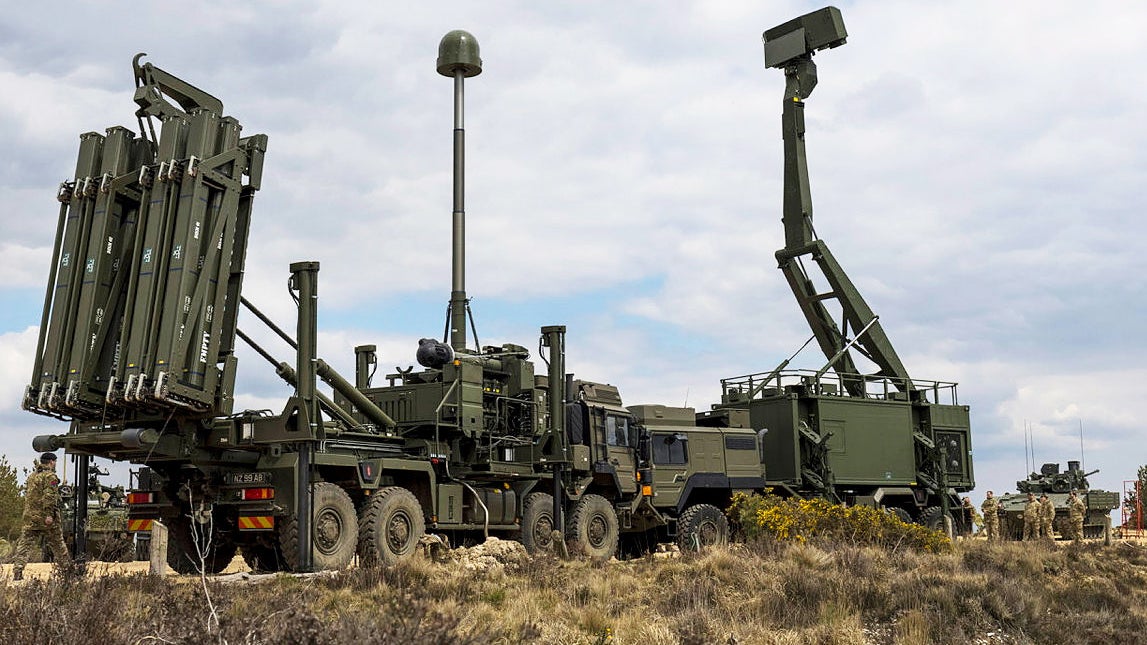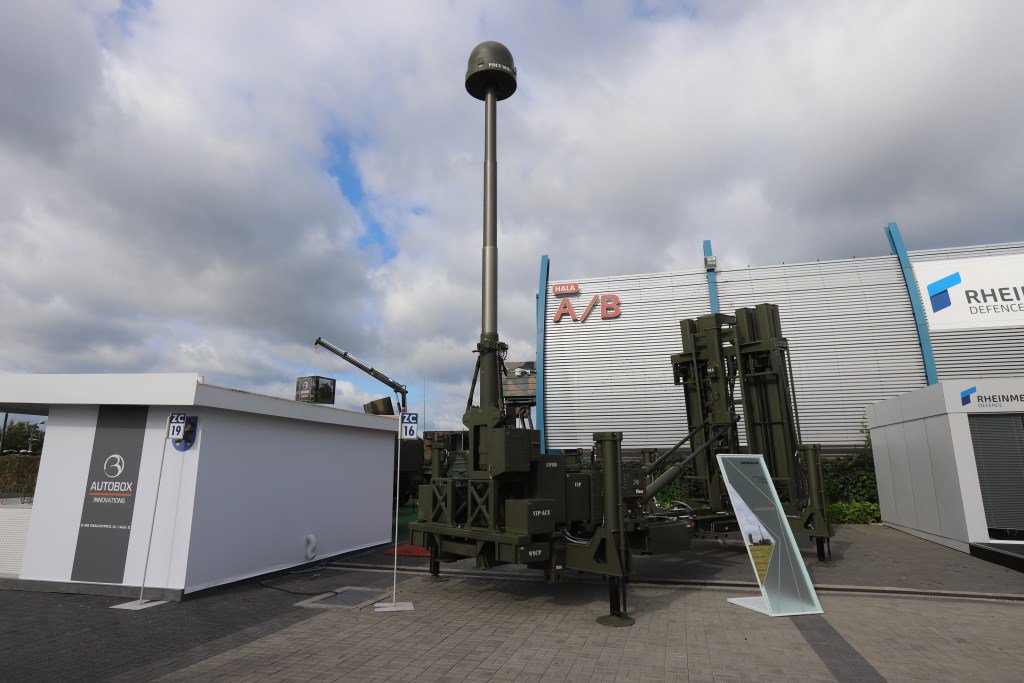The UK military is all set to induct powerful Sky Sabre SAM – an advanced air defense system, which British experts claimed is designed to neutralize the threat of Russian stealth fighters and hypersonic missiles.
The new-generation Sky Sabre SAM, already in service with the Royal Navy, is now going to protect British Army assets against aerial attacks. The system, which combines surveillance radar, tactical data-links, and missiles, is a much-needed successor to the Rapier low-level air-defense system developed during the Cold War.

The British Army’s 16 Regiment Royal Artillery has begun to use the Sky Sabre, and further deliveries will “be modified to operate in various parts of the world”, according to the UK Ministry of Defense.
Sky Sabre will be able to hit a tennis ball-sized object traveling at the speed of sound with unprecedented speed, accuracy, performance, and target acquisition.
“Sky Sabre’s trailblazing technology has considerably improved our forces’ protection from aerial threats. To those who desire to harm us, this cutting-edge defense system is a clear indication of our war-fighting capabilities”, said Jeremy Quin, the Defense Procurement Minister in the UK Government.
The 16th regiment which is inducting this system is a part of the 7th Air Defense Group, based at Baker Barracks on Thorney Island, West Sussex. It has now embarked on an “extensive training package” to complete the transition from the archaic Rapier system, which is expected to be gradually phased out of service.
“We’ll be able to compete with our peers and take on some of the hardest opponents,” said 16 Regiment Royal Artillery Commanding Officer Lt. Col. Chris Lane. “This new missile system, with its new launcher and world-class radar, will undoubtedly position us at the forefront of ground-based air defense.”
Sky Sabre propels @BritishArmy to the very forefront of ground-based air defence missile technology.
✅Missile distance increased three-fold
✅Missile speed up to 2,300mph
✅Radar range increased by 100kmWatch below to find out more or read ?https://t.co/YvQEzowBgA pic.twitter.com/fNmFxmrBqh
— Ministry of Defence ?? (@DefenceHQ) December 6, 2021
The advanced ‘detect and destroy’ system will be ‘the system of choice’ according to defense experts quoted by British media. It is designed to neutralize the threat of Russian stealth fighters and hypersonic missiles, claimed the expert.
This development comes in the backdrop of the UK assuming a more assertive position by issuing stern warnings against Russia. It has been trying to bolster its military presence around the globe and has recently come up with the Future Soldier plan.
In recent months, it has conducted exercises in the Indo-pacific region and enhanced its engagement with India, an important player in the region.
The UK has also made significant efforts to soft-launch itself into the Middle-Eastern region, with the British Army recently shifting a traditional base from Canada to Oman.
The Sky Sabre
The Sky Sabre is a land-based version of the CAMM (Common Anti-Air Modular Missile) series of surface-to-air missiles developed by MBDA UK for the British armed forces. It is a point defense and small area defense missile that can defend against saturation strikes from supersonic anti-ship cruise missiles, fighter jets, and other high-performance targets.
It accomplishes this through numerous fire channels that provide 360-degree simultaneous coverage and great maneuverability. Sky Sabre has a “high rate of fire against numerous simultaneous targets,” according to MBDA, with capabilities comparable to the Aster 15 missile.
Saab Giraffe Agile Multi-Beam (AMB) 3D medium-range surveillance radar installed on an extendable mast and it can cover up to 120 kilometers. The same radar was already in use with the British Army for missions such as air surveillance and counter-rocket, artillery, and mortar fire before it was integrated into the Sky Sabre.

It has a cutting-edge computer system that connects the radar and missiles and directs the latter to its targets. It also includes ‘Link 16’, a tactical data link that allows Sky Sabre to communicate information with Royal Navy boats, Royal Air Force systems, and allies, enabling for complete integration between the UK armed forces and joint NATO operations.
The Surface-to-Air Missile Operations Center (SAMOC) fire-control computer can simultaneously guide 24 missiles to individual targets. Israeli company Rafael has built this component.
The CAMM, on which Sky Sabre is based, is also known as the Sea Ceptor and is utilized in naval applications, including aboard Royal Navy warships. The CAMM is based on the infrared-guided Advanced Short-Range Air-to-Air-Missile (ASRAAM), which is now in service on Royal Air Force Typhoon jet fighters, among others.
Sky Sabres VS Rapiers
Rapier, a low-level air defense system, was first deployed by the British Army in the early 1970s and has since seen action in the Falklands campaign, Operation Desert Storm, and, most recently, the defense of London airspace during the 2012 Olympic Games. Since its inception, it has been upgraded several times. However, it is now set to make for the CAMM-based Sky Sabres.
The CAMM is twice as heavy as a Rapier missile and has three times the range: MBDA claims a range of more than 15 miles for the CAMM, whereas the British Army claims a range of just over 5 miles for its latest Rapier FSC variant.

The CAMM can deal with a broader spectrum of threats as compared to the Rapiers, such as low-observable targets, high-speed missiles, drones, and precision-guided air-to-ground weapons that are increasingly relevant to today’s warfare.
Each launcher of the new system, like the Rapier FSC, contains eight missiles. Additionally, using soft vertical launch canister rounds, the Sky Sabre launcher can be reloaded in less than half the time it took to replace missiles on the Rapier.
“Sky Sabre will typically be used to protect Army formations or forward airbases,” according to defense analysis website Navy Lookout, “and the 24 sets being purchased are a fraction of what would be required to establish a protective umbrella over the many vulnerable military and civilian sites in the United Kingdom.”
Sky Sabre may need to be backed up with other short-range systems like radar-directed cannons or Star-streak HVM batteries to provide comprehensive in-depth defense, particularly at high-value installations or when radar range is limited by the environment.
The Sky Sabre surely represents a significant advancement over the previous system, extending air defense coverage beyond the short-range domain to assist bridge the gap with longer-range weapons.
- Contact the author at sakshi.tiwari9555@gmail.com
- Follow EurAsian Times on Google News




